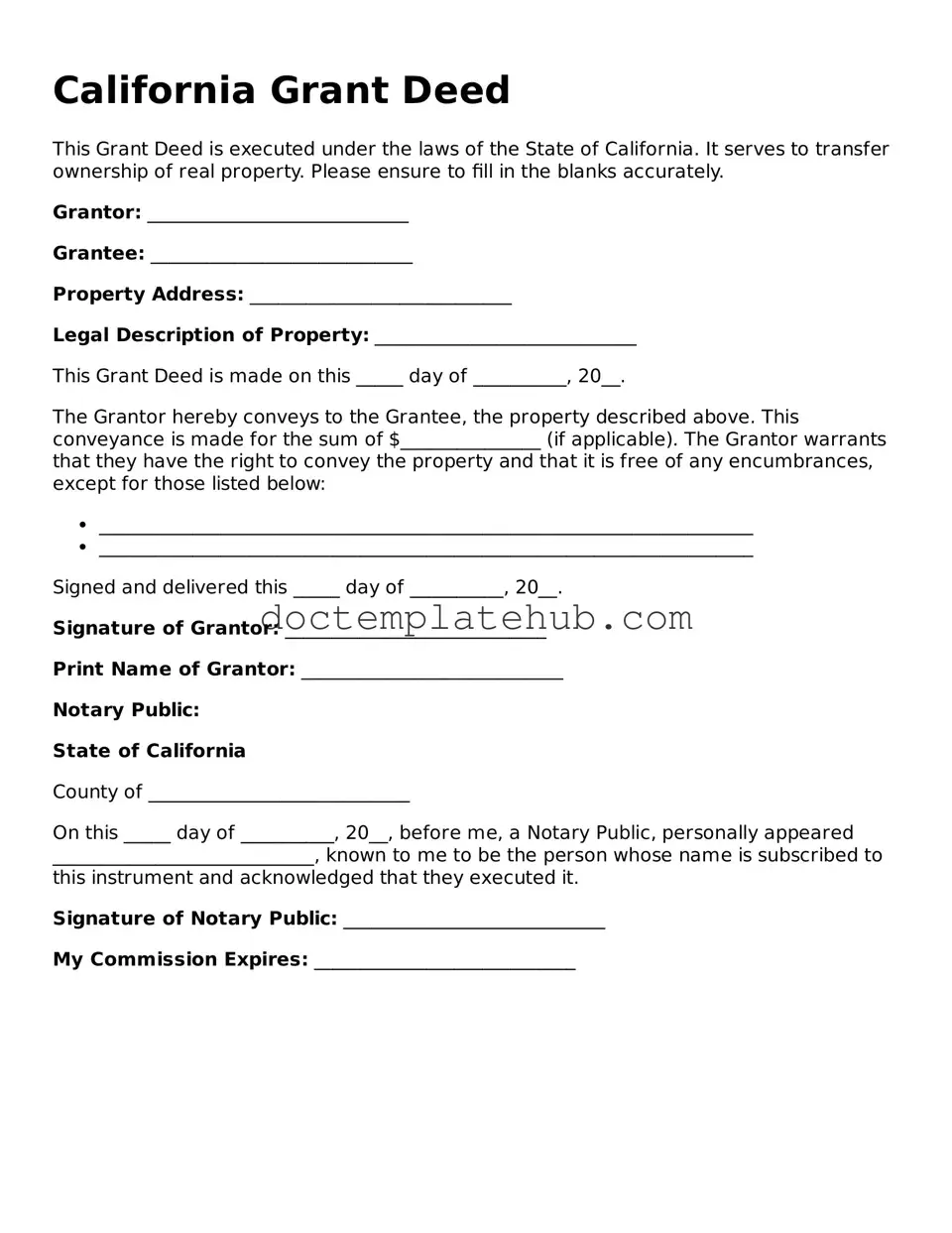What is a California Deed form?
A California Deed form is a legal document used to transfer ownership of real property in California. It serves as proof of the transfer and outlines the details of the transaction, including the names of the parties involved, a description of the property, and the date of transfer.
What types of Deeds are available in California?
California recognizes several types of Deeds, including Grant Deeds, Quitclaim Deeds, and Warranty Deeds. Each type serves a different purpose. For instance, a Grant Deed provides some guarantees about the property, while a Quitclaim Deed transfers whatever interest the grantor has without any warranties.
Who can create a California Deed?
Any individual or entity that holds title to a property can create a California Deed. This includes individuals, corporations, and trusts. However, the person executing the Deed must have the legal capacity to do so.
What information is required on a California Deed?
A California Deed must include the names of the grantor and grantee, a legal description of the property, the date of the transfer, and the signature of the grantor. Additional information, such as the consideration paid for the property, may also be included.
Do I need a notary for a California Deed?
Yes, a California Deed must be notarized to be valid. The notary verifies the identities of the parties involved and ensures that the Deed is executed voluntarily. This step is crucial for the Deed to be recorded with the county.
How do I record a California Deed?
To record a California Deed, you must file it with the county recorder’s office where the property is located. There may be a fee for recording, and it is important to ensure that the Deed is properly completed and notarized before submission.
What are the tax implications of transferring property with a California Deed?
Transferring property may trigger various tax implications, including property transfer taxes and potential reassessment of the property’s value for tax purposes. It is advisable to consult with a tax professional to understand the specific implications of your transaction.
Can I use a California Deed for any type of property?
Generally, a California Deed can be used for various types of real property, including residential, commercial, and agricultural properties. However, specific regulations may apply depending on the property type, so it is important to verify any special requirements.
What happens if a California Deed is not properly executed?
If a California Deed is not properly executed, it may be deemed invalid. This can lead to disputes over property ownership and complicate future transactions. To avoid issues, ensure that all requirements are met and consider consulting with a legal professional.
Can I revoke a California Deed?
Revoking a California Deed is possible, but the process can be complex. Generally, a new Deed must be executed to transfer the property back to the original owner or to another party. Legal advice is recommended to navigate the revocation process effectively.
